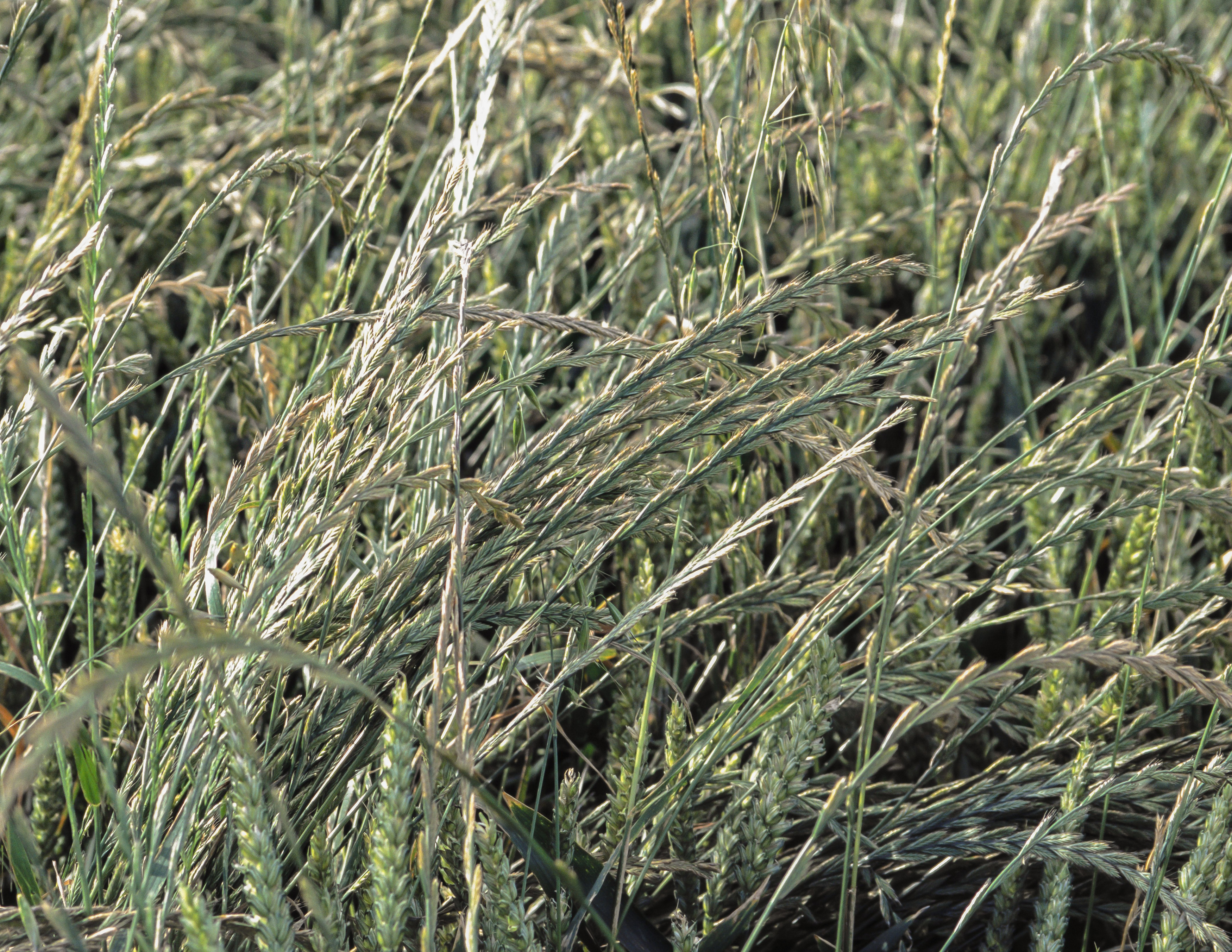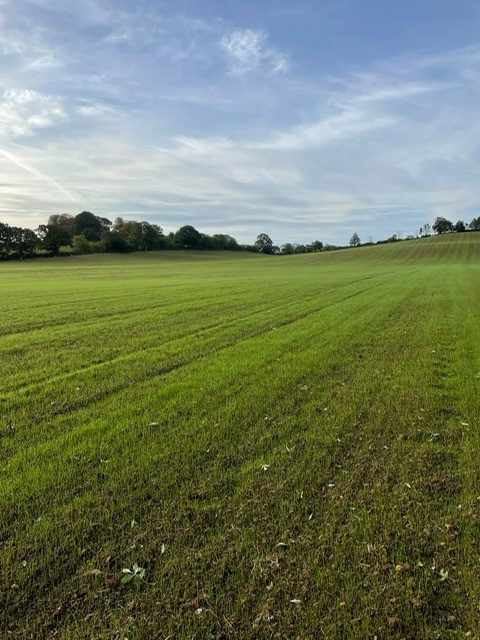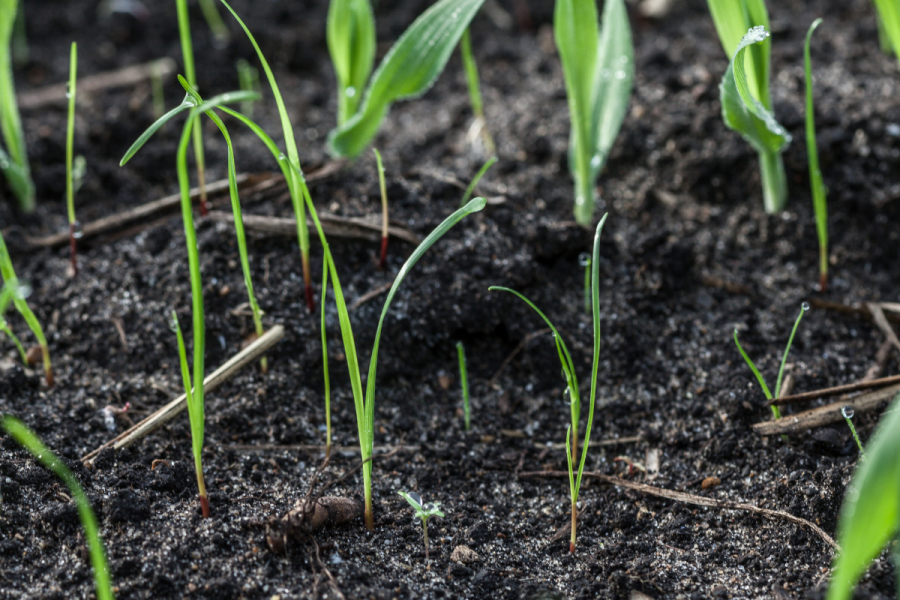With many growers now winning the war on blackgrass, there seems to be a new grassweed enemy emerging from the battlelines. CPM seeks advice on the strategies to control ryegrass.
Based on what we’ve seen in Australia and in parts of continental Europe, ryegrass has the potential to be a lot worse than blackgrass.
By Charlotte Cunningham

John Cussans says ryegrass weeds are being largely spread as a result of biosecurity failures.
Just as growers start to get on top of blackgrass burdens which have robbed many of yield over the years, its grassweed stablemate, ryegrass, seems to be on the rise as the new public enemy number one for farmers.
Ryegrass is a highly competitive grassweed with challenges from both a cultural and chemical control perspective, making it a really difficult weed to tackle.
CPM speaks to John Cussans, weed biology and management specialist at NIAB to get his experience of the grassweed and advice on how to manage it – as well as thoughts on where pipeline active Isoflex (the trade name of bixlozone derived from the isoxazolidine family) might fit – while independent agronomist and farm manager, Colin Woodward, discusses how he’s tackling the weed in Oxfordshire.
Why is ryegrass becoming an issue?
There are multiple species of ryegrass. Perennial ryegrass (PRG) is used extensively in environmental schemes and grass leys and while it’s possible to get PRG carrying over into crops following temporary leys as weeds, it’s Italian ryegrass (IRG) which is the major problem as an arable weed.
It’s important to understand that in this scenario, ryegrass is spreading as an arable weed and should be treated as such. While there must be some linkage between historic use of IRG as a forage species and the same species now as a weed, it’s really important to understand that the majority of growers seeing new problem infestations of IRG don’t have a history of it – or a history of growing it as a forage crop. Instead, it’s being spread largely because of a biosecurity failure. This might include straw on machinery and seeds being spread from field-to-field by failing to effectively clean out a combine after harvesting infested fields, for example.
They can be quite hard to physically distinguish between, but the only really reliable ID comes by looking at the seedlings. The leaves are rolled in the shoots in IRG but in perennial species they are folded flat. IRG is also physically bigger.
It’s important to stress that while ryegrass is becoming an issue as a weed, this shouldn’t put growers off from using the perennial species in a seed mix for an environmental scheme, or even a long-term grass ley to help manage some of these grassweeds.
Is ryegrass worse than blackgrass?
A lot of the feedback from growers who have had blackgrass and are now battling ryegrass is that it is a much more difficult weed to control in practice. This comes as two main challenges. Firstly, the level of control that can be achieved with herbicides and secondly, how difficult it may be to use cultural controls effectively.
In terms of competitiveness on a per plant basis, ryegrass is more than twice as competitive as blackgrass. There has been a lot of work done on blackgrass and research has calculated an average figure that about 12 plants of blackgrass are required to cause a 5% yield loss in a winter wheat crop. This compared with only five plants of IRG, which demonstrates just how damaging ryegrass has the potential to be.
As a bigger plant with more biomass, it also means that there are higher levels of seed return in ryegrass. For example, with IRG plants in a winter wheat, there tends to be more than 20 tillers per plant – more than twice the amount in blackgrass – and about 500 seeds from a single plant. This means more seed return as well as more yield losses. It’s just a really difficult plant to manage.
One of the other challenges is that with blackgrass in winter crops, typically the weed will mostly come up around the time of drilling. But with ryegrass, there’s quite a protracted germination window through the autumn so it can be harder to get pre-emergence herbicides to last long enough to control all of the individuals.
What about resistance?

While perennial ryegrass is often used in environmental schemes and grass leys, it’s Italian ryegrass which is proving to be the arable weed issue.
There are a lot of really good herbicides available that work well, but also an awful lot of resistance issues at play. Looking at global ryegrass species, there are confirmed cases of resistance – or confirmed cross-resistances – to 11 different modes of action.
In amongst that, there are examples of glyphosate resistant IRG in Europe. So in terms of the potential for this species to go on and develop to become tolerant to different herbicide classes, it’s absolutely massive.
As it stands at the moment, there are known resistances to the ‘fop’ and ‘dim’ herbicides – this means herbicides not working at all in some populations, not slight shifts in sensitivity. Herbicide resistance to has also been confirmed to the ‘den’ herbicide, pinoxaden, and to ALS-inhibitor contact herbicides too.
Most recently, there have been some confirmed cases of flufenacet resistance across Europe as well as in the UK. At the moment these resistance traits do not occur in all populations by any means, and the proportion of populations where resistance across a wide range of herbicide is present are relatively rare. However, that global picture is starting to play out in the UK to some extent, where the potential for this species to develop resistance is very high.
How can I manage it?
When it comes to cultural control, all the approaches are the same as in blackgrass, but in each case appear slightly less effective. Biosecurity is essential for this spreading weed. Quite a lot of these infestations start in a patch near a gate, or the odd plant on a headland, and that’s the stage at which you can usually intervene effectively. If it’s a patch, destroy it or perhaps a bit of hand-rogueing might be effective if it’s just a few plants.
With blackgrass, growers are used to getting a fantastic response to cultural control approaches like spring cropping and delayed drilling. While all of these methods seem to work for ryegrass, it appears more of it has to be done across the rotation to gain the same level of control as seen with blackgrass.
The protracted emergence also means that if spring crops are being drilled, which can be over 90% effective in managing blackgrass, it’s not such an effective technique in ryegrass. So to maximise control where possible, it’s important to focus on making sure the crop is covering the ground well and there are no drill misses – really just preventing the potential for ryegrass to germinate throughout the season.
The worst-case scenario with all grassweeds is it may reach a point where it’s better to take the land out of arable production and put it into an environmental scheme, for example. But the important thing to remember here is that threshold for action will be a lot lower than it might be in blackgrass.
While it’s important to talk about management to farmers who have a problem with ryegrass, it’s just as important – if not more – to talk to those who don’t yet have it on farm to explain what a really difficult weed it is, and why taking action early will be essential if it does come onto the farm to prevent it becoming established.
How about chemistry?
There are chemical control options, but there are also developing issues with resistance, so resistance management is key here and looking after the chemistry that is available is essential.
In crop, this means broadening the base of the herbicide programme – diversifying the number of modes of action used in each individual crop and the rotation as a whole. In winter crops, think about sequencing rather than just stacking to help extend that pre-em activity and cover the whole germination window.
Outside of the established crop a real focus on glyphosate stewardship is essential in this species. For ryegrass, herbicide resistance testing is a key plank of management. Because there are so many different resistance traits, and more complex, unpredictable cross-resistance patterns, appropriate herbicide resistance testing on an individual field basis is really important.
Where will Isoflex fit in?
NIAB’s experience of Isoflex in the field scale is limited so far, with work focused mainly on glasshouse pot trials at present. What we’ve seen of the active so far suggests it will be strong on ryegrass and a valuable addition to existing herbicide programmes when it becomes available – not least because it broadens further the mode of action diversity in cereals.
Looking at the active in Isoflex, bixlozone is an authorised product in Australia and there has been positive feedback from growers over there, who say ryegrass control really is the strength of the active and a good level of efficacy has been seen.
How does Isoflex work?
Isoflex is classified as a group 13 (isoxazolidinone) herbicide and works by inhibiting plants from producing carotenoids. These are the pigments essential in protecting photosynthetic processes and also ensuring ‘normal’ plant growth and development. Inhibiting this is a process often known as bleaching and effectively stops the photosynthetic abilities in target weeds, resulting in plant death.
The active provides systemic and contact activity – with residual control – meaning growers will be able to apply it as a pre-em and early post-em control. So far, it has proven effective in cereals, oilseed rape and legumes to control problem grassweeds, including ryegrass, as well as some broadleaf weeds.
While it’s available in Australia already (under the brand Overwatch), FMC says it hopes the active will be ready for launch to the UK market by autumn 2024. See CPM June 2022 for a more in depth look at the development of the active.
Top tips – Understanding ryegrass control
- Tip 1 – Tackle any evidence of ryegrass as soon as it becomes present on farm. It may appear as patches in gateways or individual plants on a headland to start with.
- Tip 2 – Cultural controls are effective but may be required more intensively than when dealing with blackgrass.
- Tip 3 – Use the broadest herbicide base possible to prevent resistance issues.
One to watch in Oxfordshire
Managing 900ha of combinable crops at the Great Tew Estate, Oxfordshire – as well as working as an AICC agronomist across the county – Colin Woodward says he’s seen a gradual increase in ryegrass challenges over recent years.

Colin Woodward says growers can’t afford to take their foot off the pedal when it comes to ryegrass.
“I’m seeing it largely on client’s farms where they grow ryegrass leys for horse haylage,” he explains. “These tend to be Westerwold or Italian ryegrass mixes, which are often grown on short rotations of two years. The ryegrass weed issues arise after they get cultivated and put into an arable crop – which tends to be winter wheat.”
Though blackgrass is the weed that’s been the focus for many of his growers over recent years, Colin fears that tackling ryegrass is set to be a much more difficult challenge. “Something we’re finding is that there’s much more shed ryegrass seed across fields, compared with blackgrass. While blackgrass might be often found in patches, ryegrass grows literally everywhere. As such, you end up having to treat the whole field – hand-rogueing isn’t an option,” he laughs.
Colin says it also tends to be a much more competitive weed than blackgrass and germinates over a longer period of time. So how does he tackle it? “Essentially, we’re chucking every kind of cultural control at it that we can.”
This includes creating two or three stale seedbeds and leaving a gap of six to eight weeks before planting wheat, due to the amount of seeds shed in the Westerwold mixes. “Sometimes we have to plough, depending on the situation, and we’ve also significantly upped seed rates up to 400 seeds/m2 or as high as 500 seeds/m2 in the worst affected areas to reduce ryegrass competition.”

A ryegrass stale seedbed at one of Colin’s farms.
And what about chemical control? “We use a fairly heavy post- and pre-emergence stack. Pre-em applications predominantly feature Avadex (triallate) plus Crystal (flufenacet+ pendimethalin) and Defy (prosulfocarb), and then we go in with flufenacet and pendimethalin again post-em. If we need to, we’ll then use Axial Pro (pinoxaden) or Broadway Star (florasulam+ pyroxsulam) in the spring to deal with any remaining volunteers. This year, we’re also looking to try pre-emergence Luxinum Plus (cinmethylin) or Liberator (flufenacet+ diflufenican) plus Proclus (aclonifen).
Robust programmes are getting more and more expensive, but unfortunately it’s something growers can’t afford not to control, warns Colin. “For us, resistance isn’t a major problem at the moment, though it’s fairly early days. But we are aware of the issues and need to protect what chemical resource we do have to tackle ryegrass.”
The anticipated approval of Isoflex will be really beneficial in the crusade for control of ryegrass, he adds. “I recently attended a meeting with FMC where they talked through Isoflex and how it will work – what it’ll bring to the table. It’s quite exciting to potentially have another mode of action available, so if we can rotate this with what we’ve already got in the armoury then it should help protect against resistance issues in existing actives, and Isoflex itself.
“Based on what we’ve seen in Australia, ryegrass has the potential to be a lot worse than blackgrass. So going forward, I think we have to respect the fact it could become a major problem in the future and act accordingly – we can’t afford to take our foot off the pedal.”
SPONSORS MESSAGE
FMC is an agricultural sciences company that advances farming through innovative and sustainable crop protection technologies. From our industry leading discovery pipeline, to unique application systems, to modern biological products, we are passionate about bringing new solutions to growers around the world.
This article was taken from the latest issue of CPM. For more articles like this, subscribe here.




